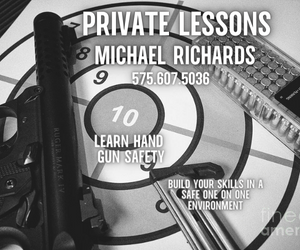By Chris Hogan
7 Minute Read
Your 20s were all about establishing a foundation for your career, your money, and your relationships. Now that you’ve hit the next milestone, the big 3-0, it’s time to build on that foundation and create a future for you and your family by learning how to invest well.
If you’re in your 30s, it’s time to get serious! You’re probably making more money than you ever have, but let’s be honest, you have a lot more going on too. Between work and family, things get crazy. It’s easy to zero in on the here and now, but remember, the future is coming—and you want to be ready for it.
Why Should I Start Investing?
Learning how to invest money the smart way now will positively impact you and your family for years to come. Even though it seems like a long way off, you need to start dreaming about your financial future and what you want to do when you don’t have to work anymore. Whether it’s traveling the world, being outrageously generous, or starting your own business—maybe you want to do all three!—when you start saving in your 30s, you’ve got time on your side. You can do this!
When it comes to an investing strategy, I like to keep it simple. And if there’s anything you could use in your 30s, it’s a simple plan that works.
How to Invest Money in 5 Steps
Finances in your 30s look different than they do in your 20s. You’re in a busy season of life, but these simple steps can help you make smart decisions to reach your investing goals. Here’s how to invest money in your 30s!
1. Master Budgeting and Set Some Big Goals
Most folks in their 20s are on a rice-and-beans budget. Entry-level jobs and student loans mean there’s not much room for luxury. But as you enter your 30s and start earning more, you can start setting—and reaching—important money goals.
Make a budget every month.
Planning for your monthly spending before the month even begins gives you the power to meet your financial goals and still prioritize life’s necessities. New to budgeting? You can make your first budget in less than 10 minutes for free using EveryDollar.
Pay off debt.
Don’t fall for the trap that a higher income means you “deserve” a new car or an expensive new wardrobe. Use your income to pay off all loans and credit cards—get rid of debt for good. When you don’t have payments, you’ll have the margin in your budget to achieve other financial goals.
Save an emergency fund.
Next, save up an emergency fund of three to six months of expenses. Over 40% of Americans could not cover an unexpected $400 expense without borrowing money or selling something.
(1) Unexpected expenses happen to all of us.
That’s why an emergency fund is so important. When you have cash saved up, you can cover unexpected costs without going back into debt or stealing from your retirement.
Be wise with big purchases.
If one of your goals is buying a home, your next step is to start saving for the down payment. Avoid the temptation to go for the big home—and the huge mortgage that comes with it. Figuring out how much house you can really afford is key. When your mortgage is conservative, you’ve still got room in your budget to build wealth for the future.
Once you’re debt-free and have a cushion of savings, you’ll have a financial foundation most folks twice your age only wish they had. With that stability in place, you’re ready to invest money for the future.
2. Save 15% of Your Income for Retirement
When you’re out of debt and have an emergency fund with three to six months of expenses saved, start investing 15% of your gross income toward retirement. The sooner you start investing, the more compound growth works to your advantage.
Here’s what I mean: Let’s say you start investing $800 a month in good, growth stock mutual funds when you’re 35. If your investment grows for 30 years at the historic average annual rate of return, you could have over $1.7 million when you retire. How much of that was money you put in? Less than $300,000. The rest was compound growth!
How should you begin investing for retirement? Start with your work 401(k) and invest at least enough to receive the full employer match. Then you (and your spouse, if you are married) can invest up to $5,500 a year in a Roth IRA.
As kids start to come into the picture, your budget may feel the strain—especially if one parent stays home to care for the kids. Whether yours is a one- or two-income family, it will take careful planning to meet your long-term goals. Just remember, when it comes to juggling college savings and your own retirement goals, saving 15% of your income for retirement comes first.
3. Choose Good Growth Stock Mutual Funds
It’s normal to feel overwhelmed by all the mutual fund options when you’re making your 401(k) selections or talking through your Roth IRA options with a financial advisor. With so many choices, it can be hard to know how to invest your money in the best way.
But choosing the right mutual funds is really simple if you follow this strategy. I recommend keeping your portfolio diversified by spreading your investments evenly across four mutual fund categories:
Growth
Growth and income
Aggressive growth
International
Yes, it’s that simple! Keeping your portfolio balanced with these four types of funds can help you minimize your risk and still take advantage of the returns the stock market can offer. If you’re confused about your fund options, talk to a financial advisor. They can help you make sense of the details so you feel confident about how your money is invested.
4. Invest With a Long-Term Perspective
When the market spikes or dips, it’s easy to make emotional decisions about your investments. Just remember: Saving for retirement is a marathon, not a sprint! When you’re investing in your 30s, you still have decades left before you retire. You’re in a great position to ride out the waves of the market.
Jumping in and out as you try to time the market only costs you. For example, a Fidelity study found that those who did so during the downturn of 2008 realized a 6.1% growth from September 2008 to March 2010. What about those who stayed in the market? Their growth was nearly 22% over the same 18-month period.(2)
And no matter what, don’t cash out your 401(k). Don’t steal from your future to fund your new kitchen remodel or dream vacation. Keep your hands off your retirement accounts until you’re ready to retire, and invest consistently year after year—regardless of what the market is doing. That’s a long-term investing strategy you can count on.
5. Invest Money With an Expert
Your 30s really are a great time in life. You have the incredible potential to reach your goals. But success won’t be handed to you on a silver platter—you’ve got to work hard and take action.
In your 30s, you’ve also got enough life experience under your belt to know you don’t have all the answers about long-term retirement investing. That’s why I recommend working with an experienced investing pro who can answer your questions and show you how to get your retirement savings started the right way.
Find a financial advisor who’ll stick with you for the long haul and help you stay on track even when times are tough. If you don’t have an advisor, we can put you in touch with an experienced, trustworthy investing pro in your area who has earned our recommendation for great advice and excellent service.
Find your pro!
About Chris Hogan
Chris Hogan is the #1 national best-selling author of Retire Inspired: It’s Not an Age; It’s a Financial Number and host of the Retire Inspired Podcast. A popular and dynamic speaker on the topics of personal finance, retirement and leadership, Hogan helps people across the country develop successful strategies to manage their money in both their personal lives and businesses. You can follow Hogan on Twitter and Instagram at @ChrisHogan360 and online at chrishogan360.com or facebook.com/chrishogan360.






























